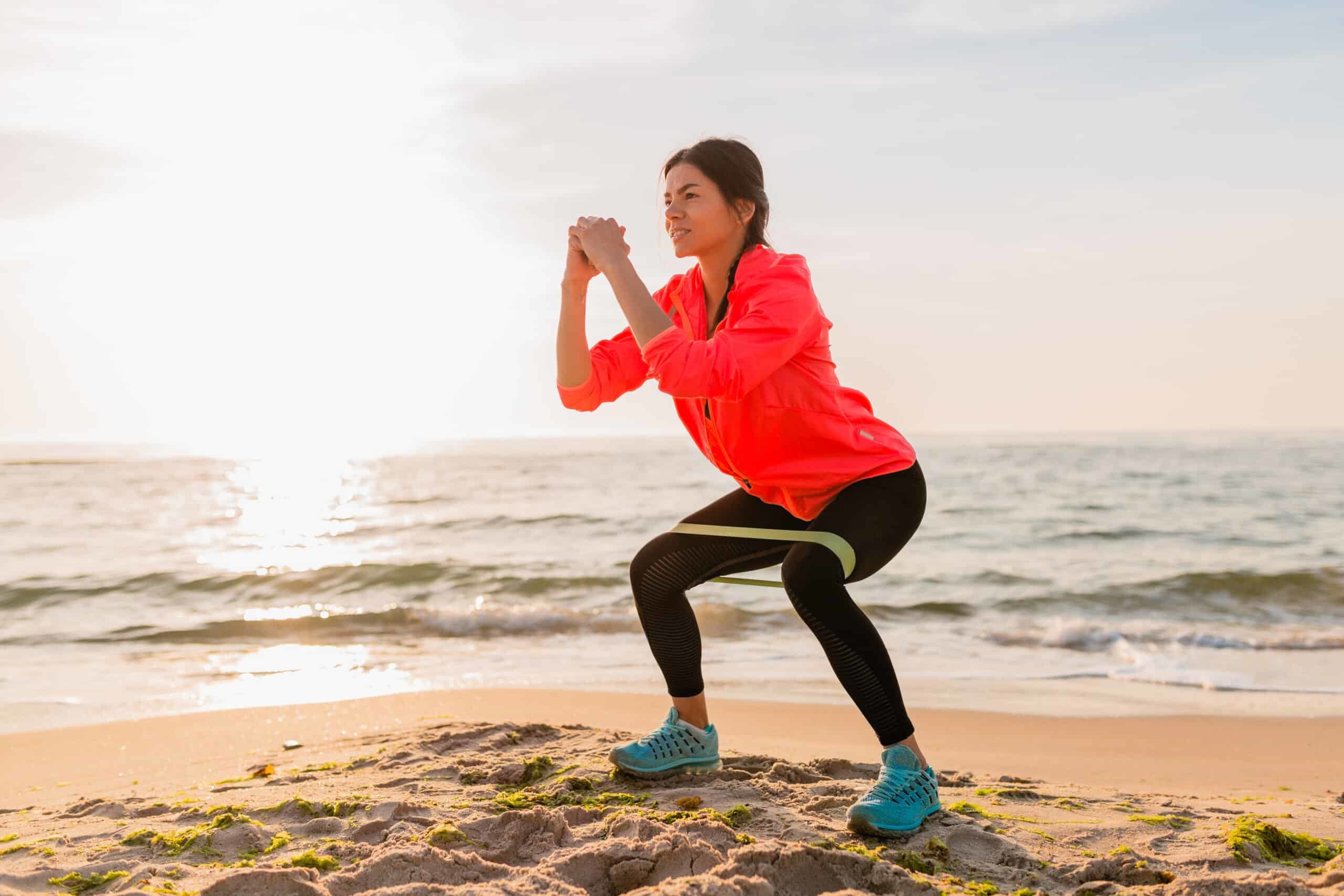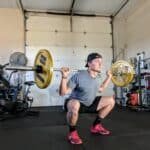The primary muscles that flex the hip are the iliacus and psoas muscles. Each of which have two muscles that connect the upper and lower body. They provide stability for your entire lower body, and are truly under appreciated. If these deeper hip flexor muscles and connective tissue are tight or imbalanced, it effects your entire body. Just because you can’t see them doesn’t mean they aren’t playing a major role in your mobility, strength, and any pain you may be experiencing. To keep your body strong and healthy, so you can stay on track with achieving your fitness goals, you’ll need healthy hip flexors.
Why Do I Have Tight Hip Flexors?
1. Inactivity
Your workout makes up a small fraction of your day. Many of us probably still spend close to 50 percent of the day in a seated position (i.e. working, commuting, eating, relaxing). If you sleep an average of 8 hours each night, then that equates to about 20 hours of being inactive.
Sitting puts the hip flexors into a shortened position relative to their natural length. When stuck in this flexed position for extended periods of time, the likelihood of developing tight hip flexors increases, especially as you repeat this pattern day after day. Sleeping in the fetal position can have a similar, compounding effect.
2. Stress
Stressful situations activate the body’s sympathetic nervous system response where the body enters a “fight or flight” mode, causing you to tense up and clench your hip flexor muscles (as well as others). Coupled with more shallow breathing, the body doesn’t get enough oxygen to truly relax and the muscles continue to hold tension.
3. Overuse & Lack of Recovery
The hip flexors can become overused by performing repetitive actions that require hip flexion, like running, cycling, kicking, or squatting. As these motions are performed day after day they can fatigue the muscles. Without giving the hip flexors a chance to adequately recover, the body may respond by holding tension in this area.
4. Muscle Weakness
Just like any other muscle in your body, your hip flexors need to have enough strength to perform the tasks you ask of them each day. They support your body in a good upright posture, provide stability for your lumbo-pelvic hip complex as you attempt a new 1RM on your squat or deadlift, and help you move one leg in front of the other as you run your next race.
Weak muscles can soon become tight muscles, as the brain senses weakness in the body and sends signals to a particular area to tighten up in order to create stability around a joint and provide protection.
5. Injury & Imbalance Can Result in Tight Hip Flexors
An injury, whether past or present, can play a role in developing tight hip flexors because of the way the body compensates around that injury. Let’s take an ankle injury, for example. At first, moving around is difficult and you rely more on the non-injured side of the body. This may occur for days, weeks, or even months depending on the severity of the ankle injury, where muscle imbalances begin to develop around your hips as a result of these compensations.
After the injury has “healed,” it is important to restore the full range of motion in the ankle joint and address any muscle imbalances that developed during that recovery process. If left unaddressed, the body remains unbalanced and will continue to compensate for the effects of the past injury. The hip flexors will tighten up and try to create stability, with one side potentially becoming tighter than the other.
6. Having Too Much Range of Motion
Working into too much range of motion goes beyond what your muscles and joints were designed to do, creating instability. This is commonly seen in people who are hypermobile and also in those who force themselves too deep in their yoga poses or other stretches.
Because the brain feels unsafe in these over-extended positions, it sends signals to the muscles to tighten up and create stability, acting as a protection mechanism. With the hips being involved in many of these movements, the hip flexors are among the muscles that will hold tension in an effort to keep the body safe.
How to Release Tight Hip Flexors
Chances are that you’re reading this article because you have tight hip flexors and they are limiting you, or causing pain in your low back, groin, hips, knees, or feet (yes, they even directly affect your feet!). Maybe you’ve tried stretching your hip flexors, but aren’t getting results and are wondering what to do next.
You’re likely familiar with many kinds of muscle release tools, such as lacrosse balls, foam rollers, and massage guns. But to release your hip flexor muscles (like your psoas and iliacus) that lay deeper within your core, you need to apply direct, prolonged (30-90 second) pressure.
A great tool that I recently tried is called the Hip Hook. It was designed by Christine Koth, MPT, a physical therapist, and it’s the only tool designed to release both the psoas and iliacus muscles by applying precise angled pressure, using a pivot to access these hard-to-reach muscles from the right angle. In addition, I read Ms. Koth’s book recently that you may also find interesting, Tight Hip, Twisted Core – The Key to Unresolved Pain.
Stay Strong Together
Jefit, named best strength training app for 2024, by PC Magazine, Forbes, and Garage Gym Reviews. comes equipped with an advanced customizable workout planner. It also features a training log, the ability to track data, audio cue tips, and a feature to share workouts with friends. Take advantage of Jefit’s exercise database for your strength workouts. Visit our members-only Facebook group. Connect with like-minded people, share tips, and advice to help get closer to reaching your fitness goals. Try one of the new interval-based workouts and add it to your weekly training schedule. Stay strong with Jefit.
- Rowing: One of the Best Full Body Workouts You Can Do - April 15, 2024
- Want Strong Abs? Do More Core Stabilization Exercises - April 12, 2024
- Strong Hips Start with Glute Activation - April 10, 2024





